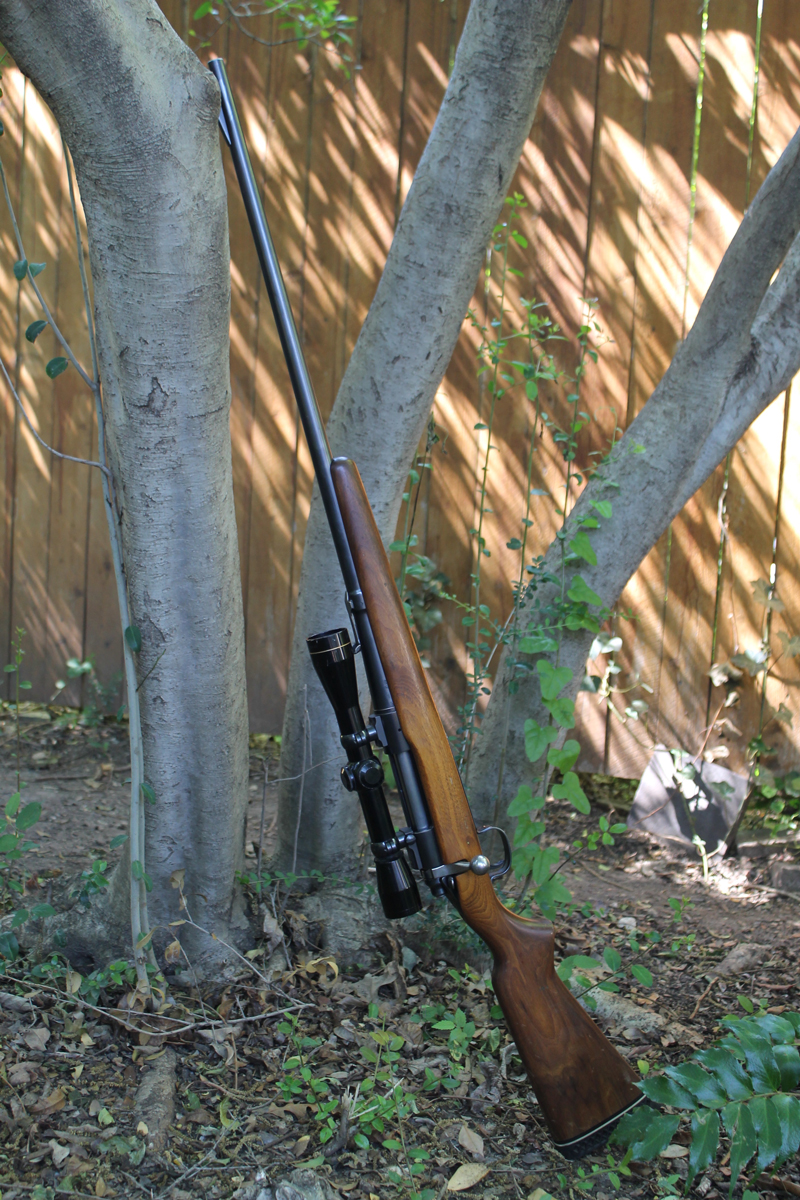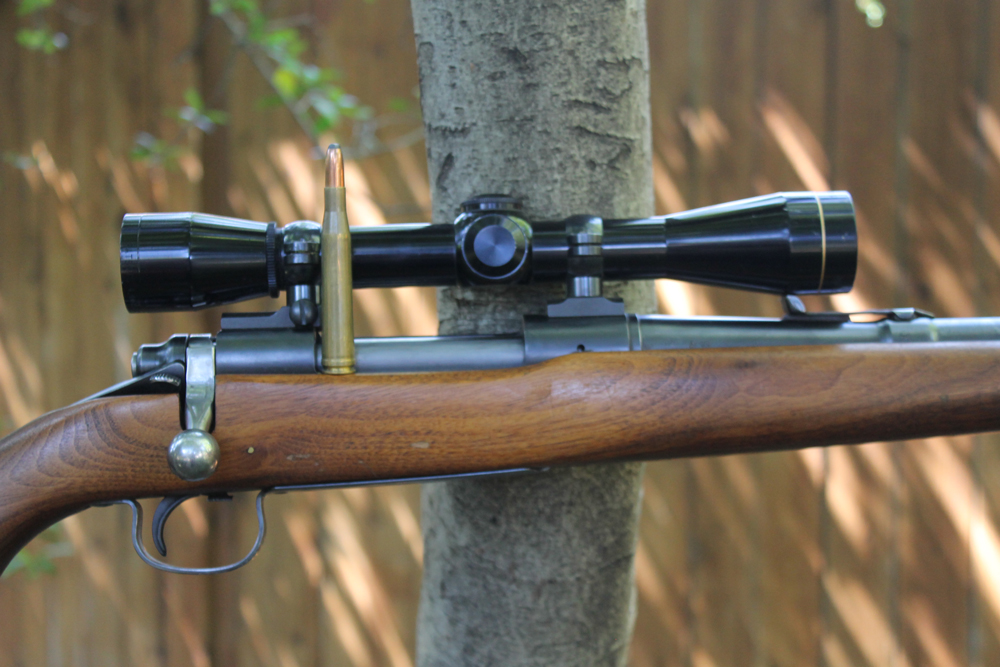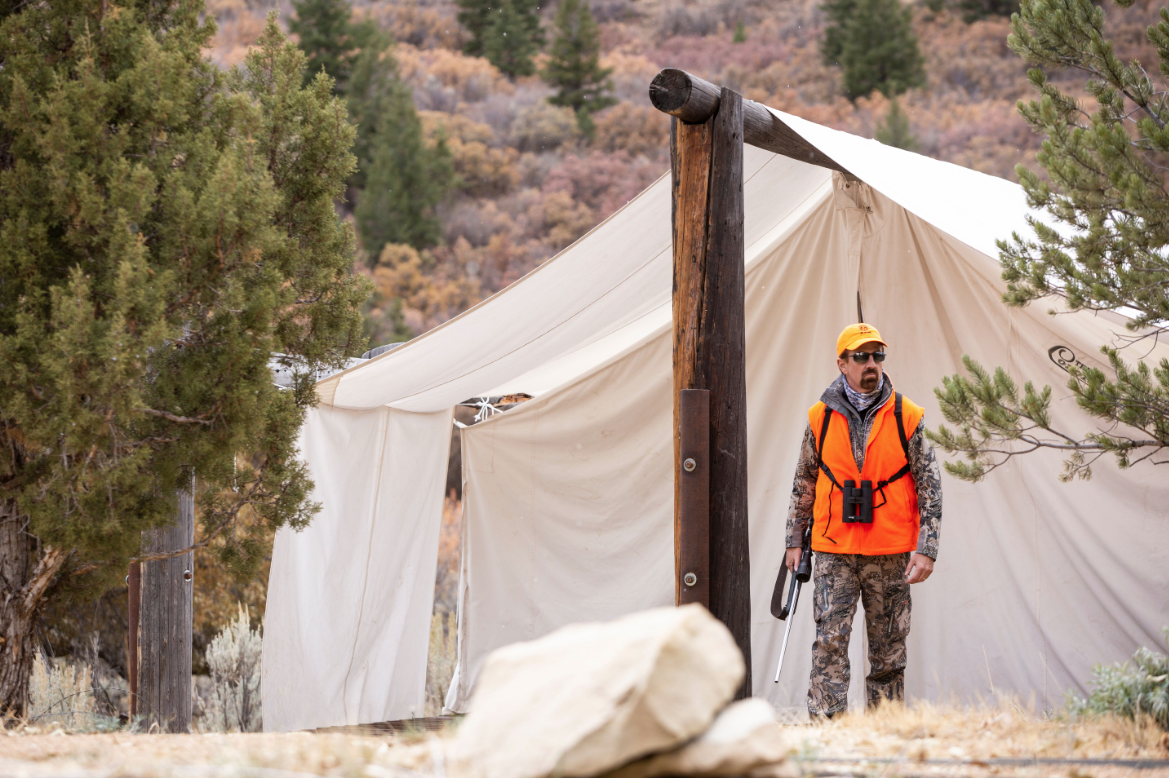Sometimes you just get lucky. TR had his “Big Medicine”; I now have “Pig Medicine.”
The “Super-Thirty” was the high-performance .30-caliber cartridge upon its introduction in 1925 (a few sources state 1920). The cartridge evokes images of African savannas teeming with game during the golden age of safari. It was pitched as the best all-around cartridge for plains game, and adequate for dangerous game in a pinch. Even when Roy Weatherby introduced his magnificent .300 magnum in 1944, the .300 H&H arguably remained the more popular.
Then came 1963, when Winchester introduced the .300 Winchester Magnum, and the .300 H&H’s popularity plummeted. A newer, faster cartridge that would function in a standard-length action, the .300 Winchester Magnum became the new standard. The .300 H&H became an anachronism, kept alive by old guys, romantics, and handloaders.
As a neophyte hunter who dreamed of hunting game larger than Texas whitetails someday, I first researched the .300 H&H as part of a months-long project, searching for the one cartridge that I could ethically and effectively use to hunt any game animal in North America. I decided on the .300 Win. Mag., and nothing I have read or experienced since has changed my opinion, but my interest in the .300 H&H never completely disappeared.

The .300 H&H falls between the .30-06 and .300 Win. Mag. in terms of recoil, making it easy for shooters to adapt to.
A few years later I became a handloader, and my interest was rekindled—the .300 H&H had the reputation of being a handloader’s dream, with excellent accuracy and a significant increase in performance over factory ammunition. But I had years of other handloading projects ahead of me, and the performance niche between the .30-06 and the .300 Win. Mag. is not that wide. But decades had passed, and I was not going to miss this opportunity.
The rifle is a Remington Model 721 with a 26-inch barrel and the plainest stock imaginable. Built in the late 1940s, it cannot be called either pretty or handsome. What it can be called is historic, accurate, and dependable, and I like each of those adjectives. I like to imagine it was purchased for an African safari, as the timeframe certainly fits. I topped it with an old Leupold M-8 fixed 6-power that complements the rifle’s lines nicely. Then I bought some reloading dies and went to work.
The rifle was actually a complete bust as a time-consuming handloading project—two trips to the range produced a deer load with a 150-grain bullet at 3,200 fps and a pig load with a 180-grain bullet at 3,000 fps. Each produced nice groups, and both bullet weights impacting within 1½ inches of the other at 100 yards. The 26-inch barrel produced excellent velocities with no pressure signs. Perceived recoil was mild—much closer to the .30-06 than the .300 Win. Mag., so it was easy to shoot well.
So much for the rifle being finicky. Within six months I had fired the rifle twice in the field, once with each load, and my .300 H&H had a mature whitetail and a 160-pound boar to its credit. Mission accomplished; now what?
If I couldn’t find a way for the rifle to distinguish itself from similar-performing rifles it would languish in the back of the safe. I went back and researched the cartridge more closely. I learned that the .300 H&H particularly excels with long, heavy bullets. Using longer bullets in standard-length cartridges lessens valuable powder space. The .300 H&H, with its long, tapered case and long neck, handles lengthy projectiles more efficiently. The answer to the question of what to use such a load on is obvious here in Texas.

These pigs fell to a single shot apiece. The nearer of the two, a 225-pounder, took a shot through the shoulder blade, dropping it in its tracks.
There is an animal whose population is exploding here, tougher than a whitetail, with heavy bones, thick hide, and a gristle plate—the feral hog. Hogs can be hunted year-round, their meat is edible, and every pig taken brings joy to the hearts of farmers and ranchers. I decided to try to turn my .300 H&H into a specialized pig gun. I bought some 220-grain round-nose bullets, reasoning that a lot of exposed lead would help with expansion, the weight would provide excellent penetration without the need for premium bullets, and that at 150 yards and in the trajectory would be plenty flat.
I can’t remember the last time I was correct three times out of three, but this time, at least, I was. Chronographed velocity is 2,700 fps, accuracy is close to one inch for a three-shot group, and sighted an inch high at 100 yards, I can hold dead-on for any shot presented where I hunt. Perceived recoil increased but remained mild; my .300 H&H remained fun to shoot.
The results have been outstanding. In the 15 months since I first tried out this cartridge/load combination, I have fired seven shots at pigs . . . and have recovered seven pigs. The pigs ranged in size from 150 to 225 pounds, with almost all weighing 200 pounds or more. Most shots have had to be taken quickly, and that is where this load really shines. Sharply quartering shots can be taken with well-founded confidence, even on a big boar. Breaking a shoulder has anchored every pig so shot. Behind-the-shoulder shots have produced complete penetration and impressively easy-to-follow (and usually short) blood trails, ending at a stone-dead pig.
I am sure that I will shoot pigs with other rifles as targets of opportunity, and I will hunt pigs with other rifle/cartridge combinations in the future. But Pig Medicine has firmly established itself as my go-to rifle for feral hogs. Pig Medicine will never reside in the back of the safe; it is a front-row rifle—exactly where an old, historic, and still-effective cartridge deserves to be.



